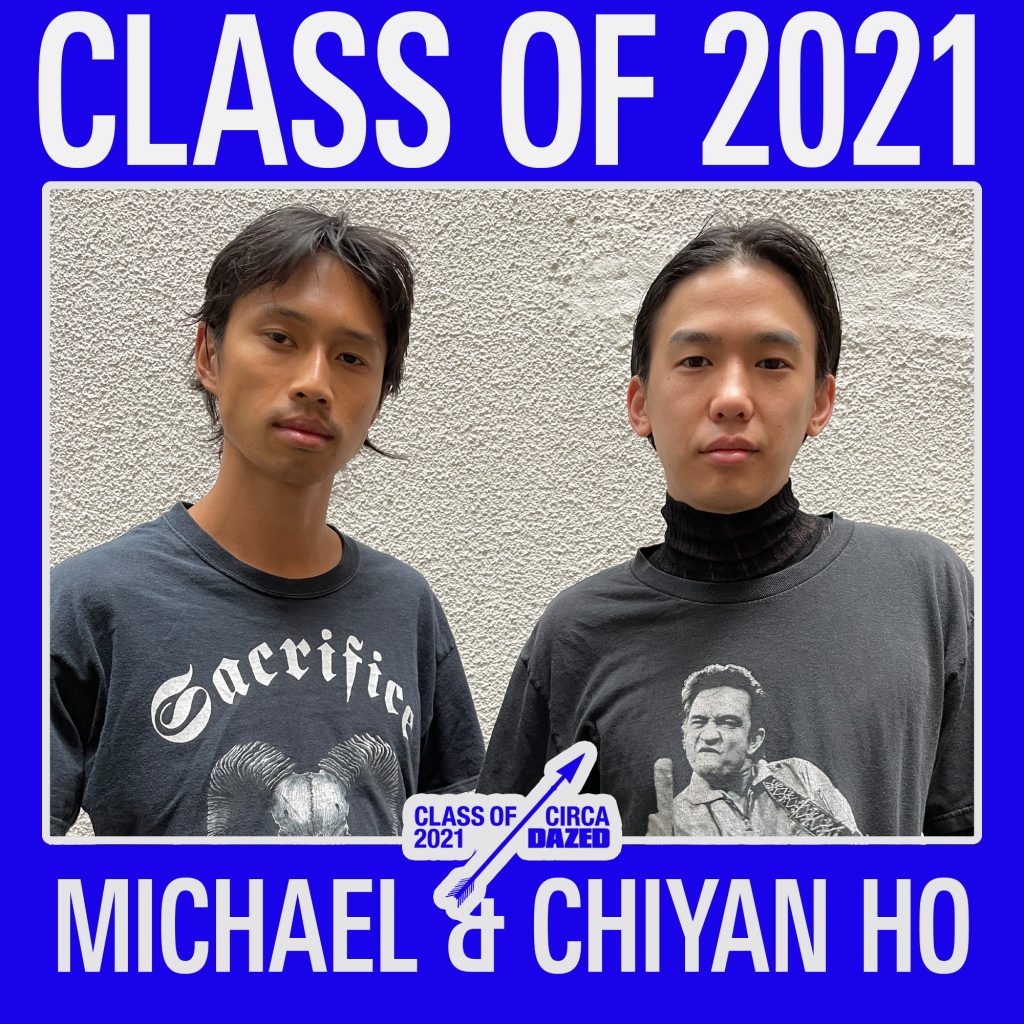Michael + Chiyan Ho
We are an artist duo currently living and working in London. As second-generation immigrants from China, our work responds to the notions of cultural mismatch and subsequently cultural (re)discovery and identity. We take inspiration from our disparate experiences between two cultures, our Chinese heritage and our European upbringing. This combination of cultures helps bring to surface feelings of estrangement, (un)belonging and notions of home.
Our collaborative approach to making emerges from the desire to locate a dialectical space in which to think through our individual and shared experiences and can be understood as a form of cultural articulation, and re-articulation. Always in the presence of one another’s ideas and criticisms, the essence of our methodology sits within a process of self-reflexive discourse.
Although predominantly painting based, as trained architects, our practice is research-driven and traverses different mediums, such as film-making, sculpture and installation as a way to explore aspects of identity and issues of race. Together the work reveals a range of identities and stories, from the playful to the political and from the erotic to the domestic.
Q: WHAT WAS YOUR ROUTE TO YOUR CURRENT ARTISTIC PRACTICE?
As both our parents and families come from working-class backgrounds, we didn’t discover art till our teens – by then we were using creative outputs such as dance or music. We both then went on to study architecture at the Architectural Association, where the education places emphasis on critical and conceptual design. After the completion of our architectural degrees, and having spent time separately working abroad in D.F (Mexico) and Basel (Switzerland), our desire to work together as an artist duo became apparent. We both really enjoyed and appreciated the diverse education of architecture that has prepared us with important skills and a critical outlook on life. Nevertheless, we feel that there is a big gap between the architectural education and profession, which is why we pursued an art-based practise after all. Art compared to architecture allows us to create without having to propose a solution to issues, but rather to challenge social and political tensions we found pertinent, whilst at the same time allowing us to reconnect to our Chinese heritage. After graduating, we gave ourselves some time to experiment with different concepts, materials and mediums in order to establish our line of enquiry of our art practice. We feel that during these years of exploration, we have found a common ground and a subject matter that we feel passionate about and want to explore further in the future.
Q: CAN YOU IDENTIFY ANY ELEMENTS OF YOUR COMMUNITY OR COLLABORATORS THAT HAVE HAD A STRONG INFLUENCE?
There are several elements that influence our work. We are inspired by our broader diasporic community, whether that be our elders or peers. We learn from their narratives and histories of migration and assimilation. We pay particular attention to the moments of ‘in-between’, where East meets West. For example, a short film that centred around the Chinese takeaway looked at their adaption of food to align with a western palate, by serving fish and chips alongside sweet and sour chicken.
Q: HOW IS YOUR PROJECT TIED TO THE CIRCA X DAZED CLASS OF 20:21 THEME OF ‘COMMUNION’ ?
The project entitled Empty Orchestra, addresses the model minority myth and the political ‘silence’ that is often associated with the Asian nature. This topic is explored through the gaze of China’s KTV culture, a common communal pastime. Karaoke rooms are often seedy and anarchic spaces that are partly sealed off from external social and political pressures. As a result, they allow for people to come together as a communion to express themselves and explore their identity, particularly in a cultural context that discourages explicit expression. They become thriving and vital environments in which the illicit, the love songs and the political collide.
“Empty Orchestra” offers to turn Piccadilly Circus momentarily into a Karaoke room, inviting the viewers to partake in the sing-along. The poem is a tender suggestion against staying ‘silent’, providing a moment to speak out (albeit literally) and to reflect on what may be, when one’s opinion is voiced.
Q: HOW WOULD THE CIRCA PRIZE OF £30,000 IMPACT YOUR FUTURE PRACTICE?
Winning the CIRCA PRIZE would be a major impact for our future art practice. As emerging artists, we currently work two side jobs to maintain a studio as our art practice is financially not yet sustainable. The prize money would support us financially and give us the opportunity and time to solely focus on our studio and embark on a period of research and the possibility to create unrealised projects that have been on our minds that have not been able to be produced without external funding.
FOLLOW MICHAEL AND CHIYAN HO ON INSTAGRAM
